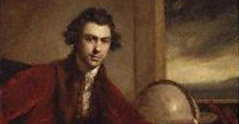|
EIGHTEENTH CENTURY JOURNALS
from the Hope Collection at the Bodleian Library, Oxford
Including The Actor; Anti-Theatre; The Bee Reviv’d; The Covent Garden Chronicle; The Eaton Chronicle; The Free Briton; The Microcosm; Pig’s Meat; The Rhapsodist; The Spy at Oxford & Cambridge; Town Talk, The Tribune; The Watchman, The World and 62 other titles
EDITORIAL INTRODUCTION
by Professor Jeremy Black, Department of History, University of Exeter
The Hope Collection in the Bodleian Library at Oxford
contains one of the most interesting surviving collections of eighteenth-century
periodicals. They provide insight and insights into the world of the period, and
range widely to offer an effective coverage of the important topics of the
period. The collection includes famous works, such as Cato's Letters, but
also, as valuably, lesser known publications. The latter are important in their
own right, and also because more prominent periodicals frequently took on their
meaning to contemporaries as a result of their place in contemporary press
controversies. Ignoring lesser works makes it impossible to recover the sense of
contemporary controversy or to follow its course, and thus lessen the value of
the more prominent works.
This collection provides a fascinating guide to the
variety of the press. Besides much that was essentially news, the press offered
its readers the same sort of material found in magazines: songs, poems, verses,
stories, anecdotes, and extracts from books and magazines. Several of the
journals in this collection should be thought of as moral or political magazines
as much as newspapers. They are crucial to our understanding of the political
culture of the age. It is overly simplistic to argue that opposition newspapers
sought to democratise the tone and content of the press, while ministerial
papers resisted, but there is an important degree of truth in such a claim. The
newspaper became an accepted means for the pursuance of disputes, possibly
contributing to a more peaceful and a more public means of conducting political,
social, economic and religious disagreements.
However, as these journals make clear, rather than a
unified campaigning force, the press was (and is) a medium, not a message. It is
important to emphasise the different views that were presented. The press
offered the possibility of a pluralism of opinion and of public debates that
challenged any notion, contemporary or scholarly, of ideological coherence or
homogeneity. Instead, it was in the nature of the dynamic relationship between
press and public that, just as some publications challenged elite hegemony,
government authority, and/or social practices, so many others did not. A
relatively unfettered press promoted the diffusion of conservative as well as
radical opinions.
Profit remained the purpose of most British periodicals.
The public was willing to pay for political news, speculation and discussion.
Newspapers were helped by, and crucial to, the expansion in the range of public
political news. In the early eighteenth century, there was a fundamental change
in the modes of political communication, with the characteristic high political
forms of private letter and, to a lesser extent, speech, supplemented, in the
open forums of coffee house, theatre, pulpit and 'public spaces', by public
discourse. In this process, political printing - ballads, flysheets,
caricatures, pamphlets, and newspapers - played a major role, both articulating
views and, themselves, providing subject matter for the world of print. Just as
publishers sought the patronage of the public, so did politicians and political
groups that sought to use the mechanism of print to their own profit.
A greater awareness of the possibilities of print was part
of a more widespread concern to influence public opinion and the opinion of
those interested in politics. Public opinion developed as a category in
political thought, although there was uncertainty about what constituted such
opinion and about its impact on high politics. The press was central to
politicisation, the strengthening, sustaining and widening, if not of a specific
political consciousness, then at least of national political awareness.
Alongside politics, there was much else, not least crime
and sport. Information was important to all these activities. Advertising was
central to the information culture and economy, and was prominent in many
journals. Adverts offer valuable guides to the nature of consumerism in the
period. They became a central and dynamic facet of a consumerism built upon
making services and certain goods normative for the newspaper-reading public.
Developments in advertising also mirrored the general expansion of the press: a
growing diversification of contents. In addition, the standard of presentation
improved, with a greater availability of more versatile type, ornaments and
engravings, and a finer quality of workmanship.
This collection is also of importance specifically to
newspaper history. It underlines the variety of the press. A moral, instructing
work, such as the World, was very different to a political text such as
the Free Briton, which in turn took a stance that was very different to
that of the National Journal: the Free Briton received subsidies from the
Walpole government, while the National Journal was a pro-Jacobite
newspaper stamped out by government action in 1746. The tone of partisan
newspapers of the 1710s, such as the Plebeian and the Old Whig,
was very different to that of the 1790s. Then papers such as Hog's Wash and
Pig's Meat sought to strike a distinctly populist tone. Furthermore, the
collection reflects the growing importance of the press. A figure of close to
7½ million papers sold in 1750 could be nearly doubled only thirty years later.
Innovative papers appeared at new times, including evening, noon and Sunday
papers. There were important changes in content, not least the availability of
more news from within Britain.
Thus, as this collection shows, the press changed in
several respects. With its strong sense of change through time, the essential
constituent of news, the newspaper press was necessarily a dynamic medium. There
were powerful organisational reasons encouraging change. Newspapers wished to
obtain, publish and distribute news as fast as possible. Changes in the 'press'
as a whole were in part the result of the continual effort of individual titles
to probe the market and improve their own product in order to maximise profits.
The latter has to be stressed. In eighteenth-century England, as today, agencies
of news formulation and transmission were produced by distinct, coherent,
capitalist entities. Their responsiveness to public demand ensures that they are
a vibrant record of their times.
< Back
|
|















